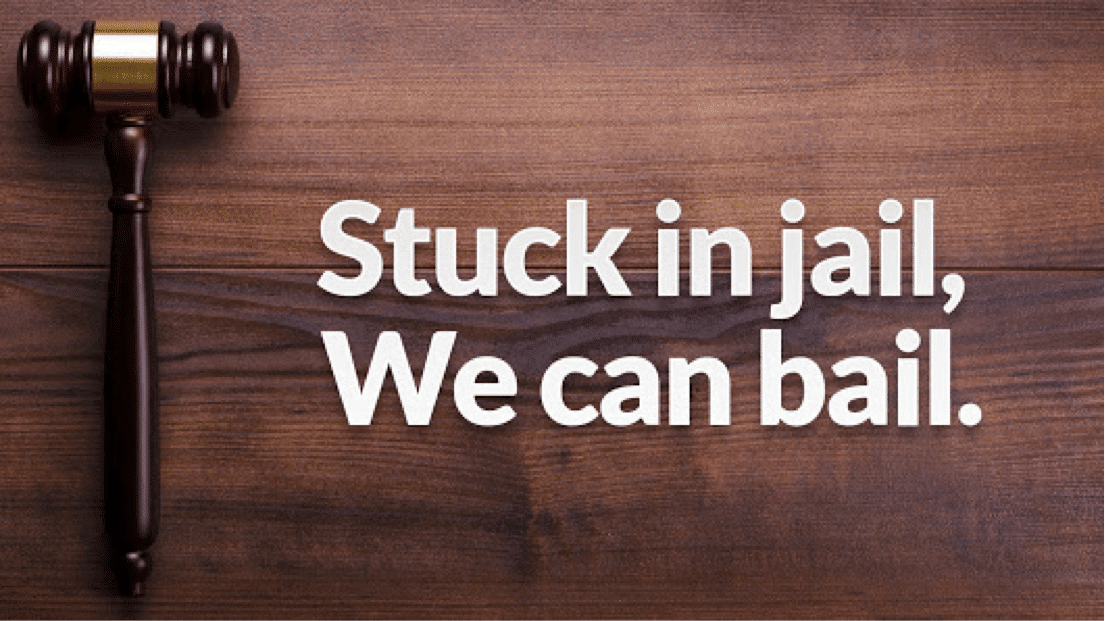A Comprehensive Look at the Bail Bonds Process in Los Angeles
A Comprehensive Look at the Bail Bonds Process in Los Angeles
Blog Article
Understanding the Essentials of Bail Bonds: What You Need to Know
Browsing the intricacies of bail bonds is a vital facet of the lawful system that can dramatically impact the implicated's trip through court procedures. A bail bond functions as a monetary assurance for the court, helping with momentary release from wardship while awaiting trial. However, the ins and outs of exactly how bail bonds run, the numerous kinds readily available, and the critical factors to consider in selecting a trustworthy bail bondsmansman can be daunting. Comprehending these aspects is crucial, as the effects of mistakes might bring about unanticipated issues that prolong much past the courtroom. What are the fundamental aspects that must grasp to effectively maneuver this procedure?
What Is Bail?
Bail is an economic plan that enables an individual accused of a criminal activity to be launched from protection while waiting for test. The main function of bail is to make sure that the defendant stands for future court procedures (Bail Bondsman). Generally established by a court, the bail amount varies depending on the nature of the criminal activity, the accused's criminal history, trip threat, and various other pertinent elements
When bail is given, the accused or a rep must pay a defined amount, which may be in cash or through a bail bond. In many cases, bail can be rejected entirely, especially for major offenses or if the suspect poses a substantial threat to public safety and security. The concept of bail is rooted in the presumption of innocence, strengthening the idea that people need to not be penalized prior to a sentence.

Recognizing Bail Bonds
A bail bond is a financial instrument that helps with the release of an accused person from safekeeping, acting as a warranty for their appearance at future court dates. This setup allows offenders to keep their flexibility while waiting for trial, minimizing the worries related to imprisonment. The bail bond procedure commonly involves a third-party firm, called a bondsman, who provides the essential funds to the court on part of the accused.
Bail bonds come in various types, including surety bonds, residential property bonds, and cash money bonds, each with distinct demands and ramifications. Surety bonds, one of the most common kind, call for a premium settlement, normally a percent of the complete bail amount, which is non-refundable. In comparison, a building bond involves utilizing property as collateral, while money bonds demand the full bail total up to be paid in advance.
Comprehending the nuances of bail bonds is essential for defendants and their families. It is important to grasp the potential monetary implications, consisting of responsibilities and fees to the bail bondsmansman, along with the lawful obligations linked to making sure court looks. Understanding of these elements help in making informed decisions throughout a difficult time.
Exactly How Bail Bonds Work
The process of securing a bail bond usually involves numerous vital steps that make sure the implicated can reclaim their liberty while waiting for trial. At first, the individual or their depictive contacts a bondsman, that assesses the instance and the associated dangers. The bail bondsman will need information regarding the charged, consisting of the charges, the bail amount set by the court, and any type of appropriate individual information.
When the bondsman accepts supply the bond, the charged or their rep has to pay a non-refundable cost, generally a percent of the total bail amount. This charge compensates the bail bondsman for tackling the economic click now risk of making sure the implicated appears in court. In some cases, collateral may also be useful content called for, such as residential property or useful possessions, which works as safety for the bond.
After any kind of collateral and the fee are prepared, the bondsman submits the necessary documents to the court. Upon authorization, the bail is published, and the implicated is launched from safekeeping. It is crucial for the charged to abide by all court dates and conditions, as failure to do so can bring about the forfeit of the bond and potential lawful effects.
Kinds of Bail Bonds
Various kinds of bail bonds are offered to match different scenarios and demands. The most common kind is the surety bond, where a bond bondsman guarantees repayment of the full bail quantity to the court in exchange for a non-refundable cost, commonly around 10% of the bail. This plan allows accuseds to protect their launch without paying the entire bail upfront.
One more kind is the cash bond, which calls for the offender or a co-signer to pay the complete bail quantity in cash money straight to the court - Los Angeles Bail Bondsman. This choice is usually chosen for lower bail amounts, as it guarantees the money is returned upon the offender's appearance at all court procedures
Residential property bonds entail the usage of genuine estate as security. In this situation, the court places a lien on the residential or commercial property, which can be forfeited if the defendant stops working to appear.
Finally, federal bail bonds are particularly designed for government cases, usually including higher quantities and added intricacies. Recognizing these various bail bond kinds is vital for accuseds and their families in making informed decisions during a challenging time.
Picking a Bondsman
When picking a bail bondsman, it is essential to consider like this several vital elements that can impact the overall experience and result. First, examine the bail bondsman's credibility by looking into online testimonials and getting suggestions from trusted sources. A trusted bail bondsmansman will certainly have a background of expertise and successful situations.

The majority of bail bondsmen bill a non-refundable cost, typically around 10% of the bail quantity. Transparency in rates is a trademark of a reliable bondsman.
Conclusion
In recap, comprehending the principles of bail bonds is important for people associated with the legal system. Bail serves as a monetary guarantee of court appearance, while various kinds of bail bonds accommodate different situations. Recognizing the functional devices of bail bonds and selecting a reputable bail bondsmansman can significantly affect the total experience. A complete examination of available alternatives guarantees notified decision-making, inevitably promoting a smoother navigating via the complexities of the legal procedure.
The details of exactly how bail bonds run, the various kinds readily available, and the essential considerations in choosing a trusted bail bondsman can be discouraging. The bail bond process usually involves a third-party business, understood as a bond bondsman, that gives the essential funds to the court on behalf of the implicated.
The most typical kind is the guaranty bond, where a bond bondsman assurances payment of the full bail amount to the court in exchange for a non-refundable fee, commonly around 10% of the bail. Bail serves as an economic guarantee of court appearance, while numerous types of bail bonds cater to different scenarios. Understanding the functional devices of bail bonds and choosing a trustworthy bail bondsman can considerably influence the total experience.
Report this page